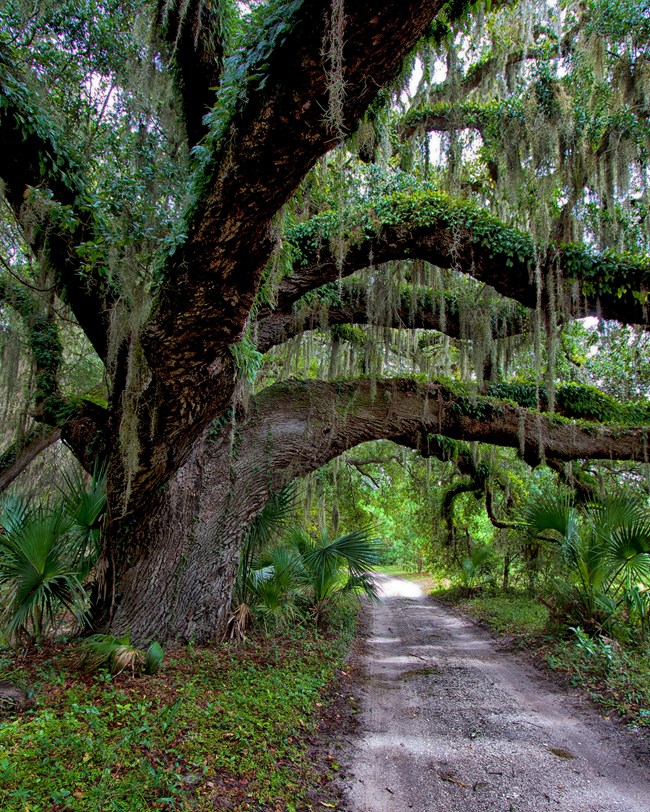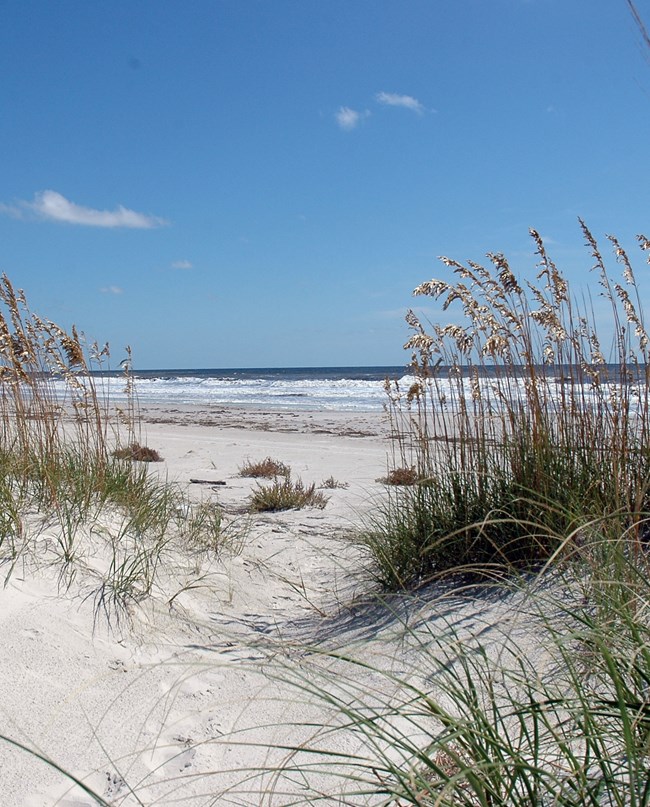Last updated: June 14, 2024
Article
NPS Geodiversity Atlas—Cumberland Island National Seashore, Georgia
Geodiversity refers to the full variety of natural geologic (rocks, minerals, sediments, fossils, landforms, and physical processes) and soil resources and processes that occur in the park. A product of the Geologic Resources Inventory, the NPS Geodiversity Atlas delivers information in support of education, Geoconservation, and integrated management of living (biotic) and non-living (abiotic) components of the ecosystem.

Introduction
Cumberland Island National Seashore (CUIS) is the largest and southernmost of Georgia’s Golden Isles, located 2–5 km (1–3 mi) off the mainland coast in Camden County. Established on October 23, 1972, CUIS contains about 14,709 hectares (36,347 acres) and protects one of the Atlantic Coast’s most diverse barrier island ecosystems (National Park Service 2016a). Hosting an array of coastal habitats ranging from beaches, dunes, marshes, mud flats, tidal creeks, upland forest, and freshwater lakes, CUIS is home to an extensive and unique biological community. The national seashore contains approximately 3,577 hectares (8,840 acres) of designated wilderness, the largest of any east coast barrier island in the United States. CUIS was designated as part of the CarolinianSouth Atlantic Biosphere Reserve (1986) in recognition of its outstanding ecological resources. Archeological resources on Cumberland Island record 4,000 years of human occupation and include Native American cultures, Spanish missions, colonial fortresses, agricultural plantations, military occupation, enslaved Africans, African American communities, maritime endeavors, and grand estates (National Park Service 2014b). Two archeological districts in CUIS (Table Point and Rayfield) are in the National Register of Historic Places and contain artifacts from Native American and enslaved African communities, respectively.
Geologic Setting
Situated in the Atlantic Coastal Plain physiographic province, the regional geology of CUIS is characterized by a series of marine terraces that progressively decrease in elevation and age closer to the Atlantic coast. Cumberland Island itself is a geologically young feature, forming during the Pleistocene about 40 ka (kilo-annum, thousand years ago) in response to global sea level fluctuations (Griffin 1982). The surficial geology of eastern CUIS consists of a core of Pleistocene-age Silver Bluff barrier island sand, surrounded by younger Holocene shoreline complex deposits that represent beaches, dunes, sand spits, and wetlands. The western portion of CUIS is composed of Holocene intertidal estuary deposits associated with the Cumberland River and Brickhill River.
Regional Geology
Cumberland Island National Seashore is a part of the Sea Island Section of the Coastal Plain Physiographic Province and shares its geologic history and some characteristic geologic formations with a region that extends well beyond park boundaries.
- Scoping summaries are records of scoping meetings where NPS staff and local geologists determined the park’s geologic mapping plan and what content should be included in the report.
- Digital geologic maps include files for viewing in GIS software, a guide to using the data, and a document with ancillary map information. Newer products also include data viewable in Google Earth and online map services.
- Reports use the maps to discuss the park’s setting and significance, notable geologic features and processes, geologic resource management issues, and geologic history.
- Posters are a static view of the GIS data in PDF format. Newer posters include aerial imagery or shaded relief and other park information. They are also included with the reports.
- Projects list basic information about the program and all products available for a park.
Source: NPS DataStore Saved Search 2799. To search for additional information, visit the NPS DataStore.
A NPS Soil Resources Inventory project has been completed for Cumberland Island National Seashore and can be found on the NPS Data Store.
Source: NPS DataStore Saved Search 2835. To search for additional information, visit the NPS DataStore.
Related Articles
Cumberland Island National Seashore
National Park Service Geodiversity Atlas
The servicewide Geodiversity Atlas provides information on geoheritage and geodiversity resources and values within the National Park System. This information supports science-based geoconservation and interpretation in the NPS, as well as STEM education in schools, museums, and field camps. The NPS Geologic Resources Division and many parks work with National and International geoconservation communities to ensure that NPS abiotic resources are managed using the highest standards and best practices available.

